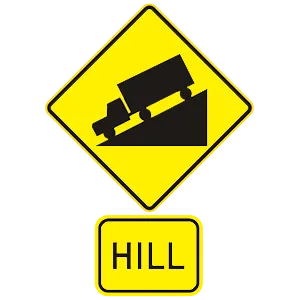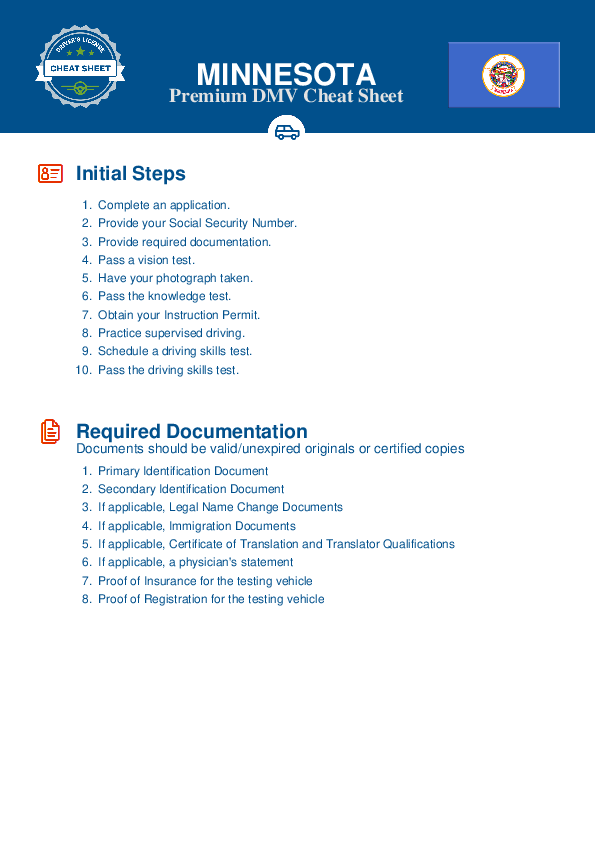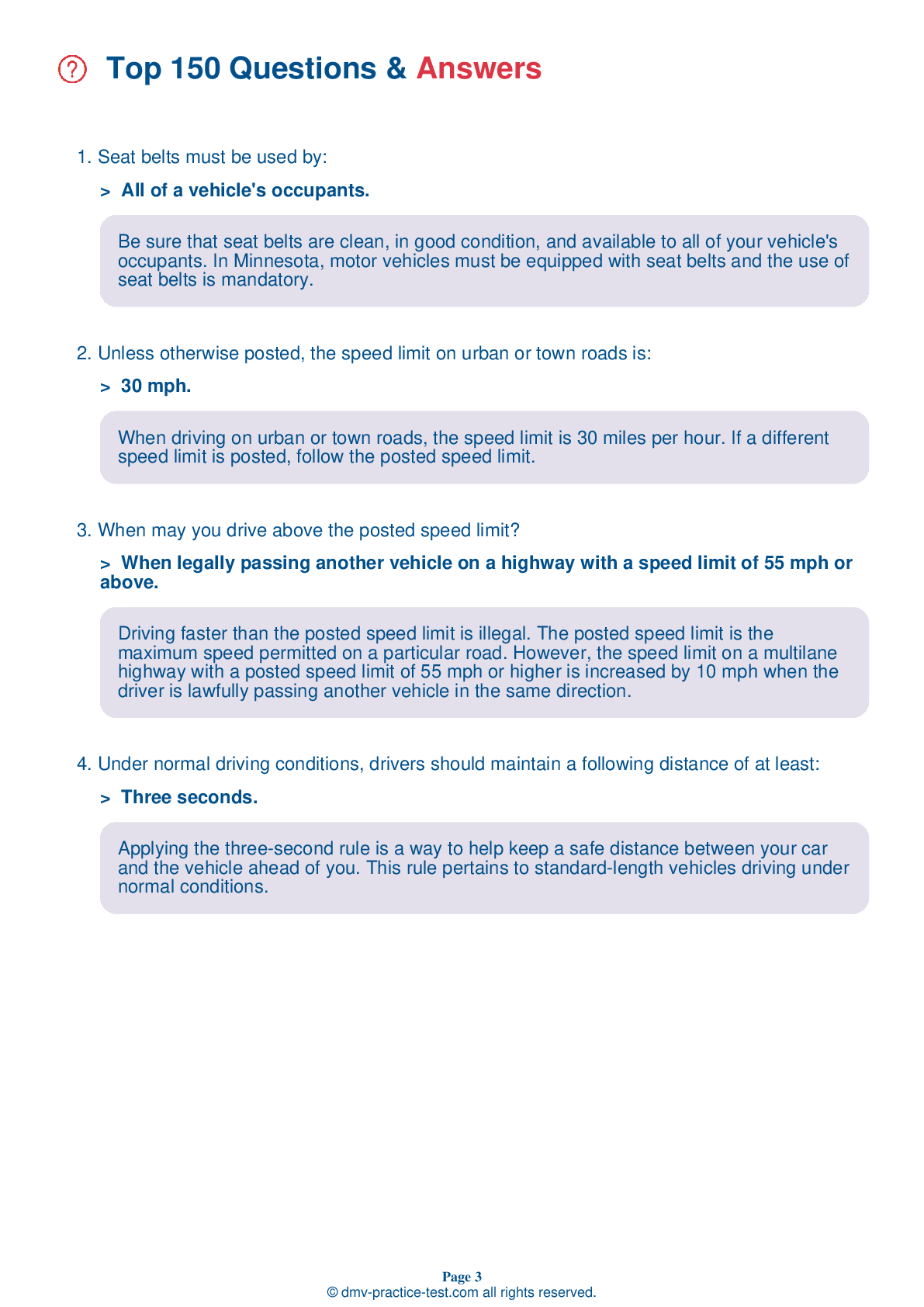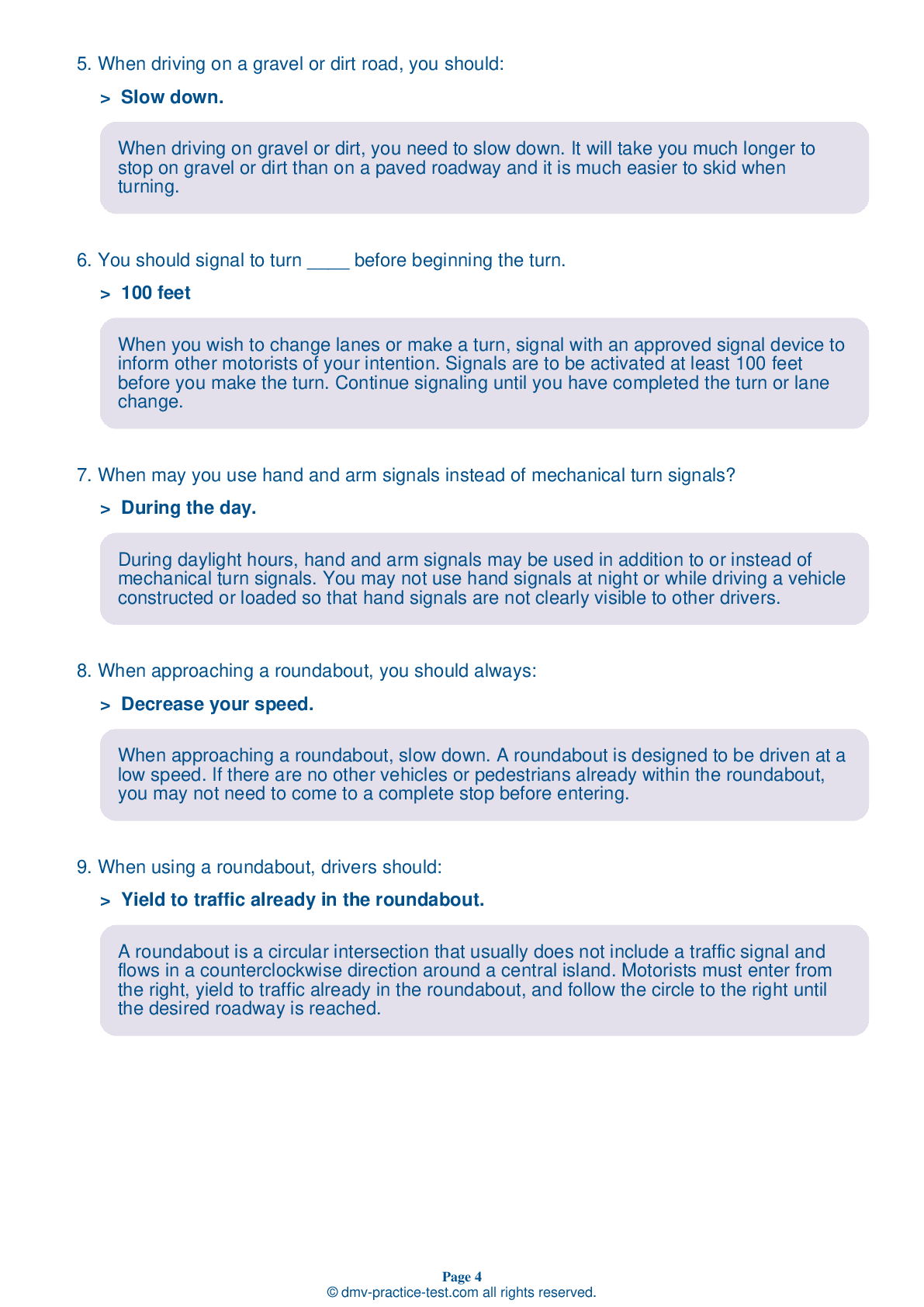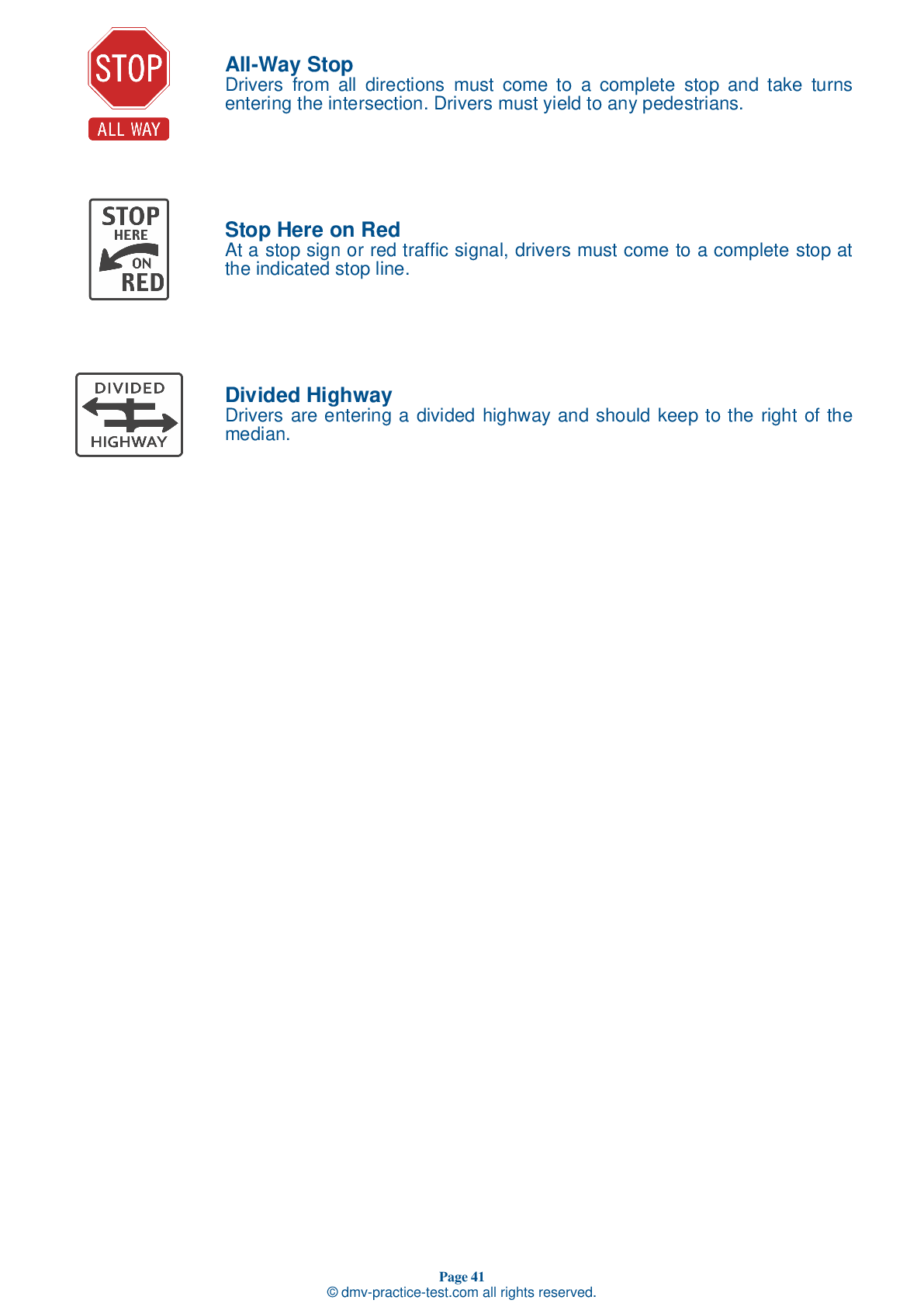FREE Minnesota DMV Practice Test #18 Page 3 of 5
The Minnesota DMV practise examinations have been updated for January 2025. It includes questions based on the Minnesota Driver Handbook's most essential traffic signals and laws for 2025. Use actual questions that are very similar (often identical!) to the DMV driving permit test and driver's licence exam to study for the DMV driving permit test and driver's licence exam.
On the practise exam, each question gets a tip and explanation to help you remember the concepts. The written component of the official Minnesota DMV test will include questions about traffic rules, traffic signs, and driving statutes, as well as knowledge from the Driver Handbook.
To obtain a passing grade, you must correctly answer 32 of the 40 questions. To help you prepare for your instruction permit or driver's licence, take our Minnesota DMV practise test.
The DMV exam is available in several languages.
Using any kind of testing assistance will result in an automatic fail, and the DMV may take additional action against your driver's licence, so stay away from it.
17 . This sign means:
